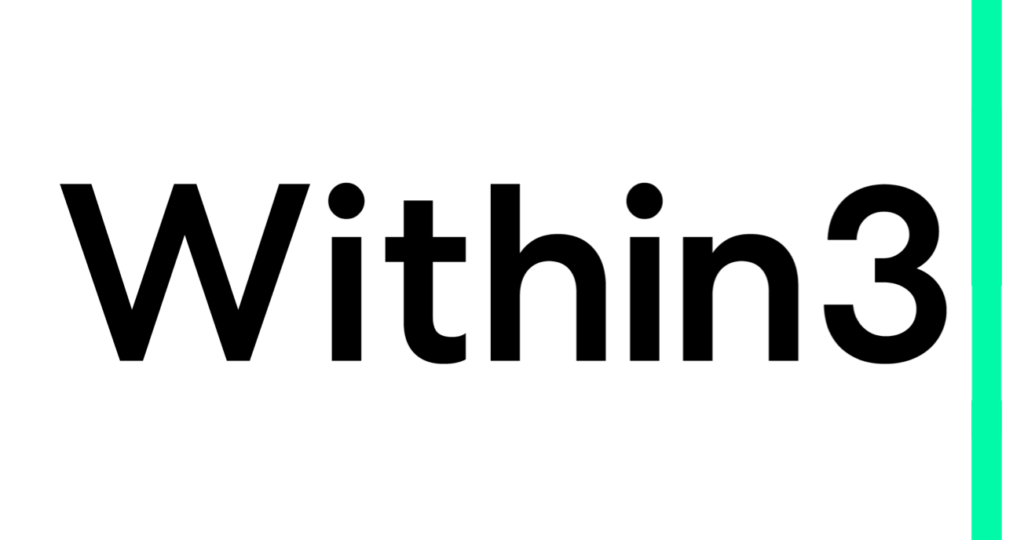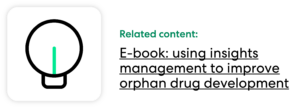Market access in pharma is about removing the barriers between patients and any new treatment, improving patient outcomes and maximizing return on investment. Market access is the end game for pharmaceutical manufacturers. Companies spend millions of dollars and years of effort developing new treatments and planning successful launches. Still, all that energy and resource is wasted if they can’t deliver those products to the patients who need them.
It’s not hyperbole to suggest that market access is critical to the success or failure of a new treatment. After all, even the most effective drug in the world is doomed to failure if it fails to gain regulatory approval or comes at a price point beyond the reach of most patients. Unfortunately, scenarios like these are more than merely hypothetical, and achieving market access remains an enormous challenge for many pharma companies.
According to Deloitte: “Without effective market access, patients lose trust in the ability of the entire health care system to ensure access to therapies. Furthermore, market access challenges can undermine the trust of other important stakeholders: providers who prescribe and administer treatments, private and public payers that pay for them, and researchers and investors who contribute to innovation.”
We’ve got a better way to identify and engage market access influencers.
In this article, we’ll explore the importance of effective market access strategies, examine some of the challenges pharma companies face, and discuss how these challenges can be overcome to encourage commercial success. Finally, we’ll take a look at how a modern insights management platform can support effective market access strategies.
Understanding market access
What is market access in pharma?
Market access in pharma can broadly be described in four simple phrases:
- The right treatment
- The right patient
- The right time
- The right price
Sounds straightforward enough, yet market access can present an enormous challenge for pharmaceutical companies. Effective market access research is required to ensure regulatory approval is gained, pricing and reimbursement agreements are negotiated, and distribution networks are developed during launch planning.
The importance of market access
Global market access determines the success or failure of a new treatment. Whether ‘success’ is defined by the number of patients treated, the outcomes achieved, the return on investment for the pharma company itself, or any combination of these things, it’s ultimately dependent on effective market access. According to Pharma Intelligence:
“Patients are an obvious beneficiary of pharmaceutical market access. Attaining and maintaining access to drugs or treatments can improve the quality of life or even save lives for countless patients. Market access in pharma is also critical for pharmaceutical companies. They must work to ensure reimbursement for treatments so such treatments may be provided to patients at a fair and affordable market price.”
Stakeholders in the market access process
Market access must take into account numerous stakeholders and their needs. These stakeholders might include:
- Patients
- HCPs
- Payers
- Policymakers
- Providers
Each individual stakeholder might have a different idea of what ‘success’ looks like from a clinical and health economics perspective. It can be challenging for pharma teams to work out how best to communicate the value of any new product to each stakeholder group.
Pharma market access challenges
If market access represents the last mile for pharmaceutical companies, it’s also the longest. A highly-competitive market landscape coupled with numerous regulatory hurdles, pricing and reimbursement challenges make achieving market access in pharma an enormously complex task.
Pricing pressure in pharma
Pricing represents something of a balancing act for pharmaceutical companies. On the one hand, developing, launching, and approving a new drug necessitates an enormous investment on behalf of pharma companies. Of course, the bottom line demands the maximum return on that investment. But on the other hand, these new treatments must make it into the hands of patients and HCPs – so the price point cannot be prohibitive. Achieving pharma market access involves balancing these conflicting pricing pressures to maximize a new treatment’s commercial and clinical potential.
Pharma access and reimbursement
The list price of a new drug and the patient’s price is rarely the same. Government bodies and other payers will often reimburse a portion of the drug’s list price, and this amount may vary based on the drug’s price, the target patient, and the local regulations and requirements of the country it’s being sold in. Pricing and reimbursement structures will differ drastically between, for example, the UK, the US, and China – countries with radically different market access healthcare models. In any case, the onus is on the pharma company to prove the efficacy of a new drug to justify its price and negotiate favorable reimbursement terms. “Pricing and reimbursement is complex and subject to country-specific requirements,” reports Avalere Health. In some countries pricing and reimbursement go together, in some countries they are very separate.”
Regulatory hurdles in pharma
The approval process can be one of the longest, most expensive, and most disheartening stages in the drug development lifecycle. Only 9% of drugs in phase 1 clinical trials ultimately earn FDA approval, or to put it another way, the attrition rate is a staggering 91%. And, of course, the FDA is just one regulatory body in one country: pharma companies must run the gauntlet of many such regulatory agencies on the quest for pharma market access. In an ever-changing regulatory landscape, staying up-to-date with – and complying with – the latest requirements can be a minefield.
Market competition in pharma
Pharma is a highly competitive industry, with numerous players, big and small, all vying for market share. In an industry where the top four pharma companies own around 20% of the market, smaller players must work hard to differentiate themselves from their competitors and achieve market access. One way to stand out from the crowd is to develop innovative new drugs that meet unmet needs in the orphan drug market or offer significant clinical benefits. At the same time, competitive pricing and favorable reimbursement terms can also lead to a competitive advantage.
Watch a short video to learn why launch success depends on partnering with various stakeholders, including payers.
Market access strategy in pharma
One of the main stumbling blocks for market access strategy in pharma – particularly in the United States – is that many key stakeholders are often at loggerheads regarding pricing and reimbursement. Pharmaceutical companies naturally want to charge the highest price possible for a new treatment and to have payers cover as much of that cost as they can – thus maximizing profits while ensuring the drug is still attractive and affordable for patients. The patients themselves want medications to be available at the lowest possible price – whether that’s due to a low list price or strong reimbursement terms is ultimately unimportant. Payers, meanwhile, find themselves caught in the middle. Many potential strategies to ensure pharma market access seek to address this imbalance.
Outcome-based pricing in pharma
Outcome-based pricing is as close as the pharma industry will likely come to a money-back guarantee. In these agreements, payers agree to reimburse pharma companies with the caveat that, should the drug fail to meet the expectations of patients and HCPs, the company will offer a refund. Such deals carry a degree of risk for pharma companies in that if a drug fails to satisfy expectations, they’ll find themselves on the hook for the cost. On the other hand, pharma teams may find favorable reimbursement deals are easier to negotiate without proving the efficacy of a new treatment upfront.
According to Forbes, “Outcomes-based pricing should continue to play an important role in containing healthcare costs… If the drug doesn’t work, you get your money back. Such a mantra can only improve the industry’s reputation.”
Value-based pricing in pharma
Value-based pricing rewards pharmaceutical companies for innovation by attaching a value to a new treatment based on the benefits it provides to patients versus any existing treatment options. In effect, payers say, “beat what’s already out there if you want to charge a high price.” This is a patient-centric pricing model that some pharma companies may balk at. However, countries that use value-based pricing have found that it promotes cultures of innovation and patient centricity, makes for a fairer and more competitive market, and allows pharma companies to enhance their reputations among patients and the public.
According to the Center for American Progress, “Value-based pricing has the potential to effect lower health care spending by the health system, alter the health conditions into which the pharmaceutical industry invests research funds, and create better patient outcomes.”
REAL-WORLD CLIENT SUCCESS | WITHIN3
Engaging global health technology assessment experts with 100% participation
A medical affairs team needed to engage global health technology assessment (HTA) experts to develop a cost-effectiveness model for an oncology drug. With the Within3 insights management platform, they got all the information required to develop the model. Despite the HTA experts’ busy schedules, geographic distance, and multiple languages, the advisory board had 100% participation. Learn how they did it.
The future of market access technology
“Market access is expected to assume greater significance, particularly in the emerging markets,” reports Kumar et al: Pharmaceutical market access in emerging markets: concepts, components, and future. “Pharmaceutical companies need to proactively engage with the key stakeholder groups in order to keep up with their potential future needs.”
Innovative pricing models like outcome- and value-based pricing will likely shape the future of pharma market access. It’s clear that stakeholder engagement – with payers, patients, HCPs, and others – will be critical to success moving forward. Pharma teams will look to engage with stakeholder groups as early as possible and capture valuable insights into their needs and requirements to factor them into the drug development process.
Insights management technology enables pharma teams to engage with stakeholder groups securely and compliantly anywhere in the world. Teams can engage with stakeholders asynchronously, across time zones and geographical borders, and translate responses in real-time. Patients and advocacy groups can deliver their responses anonymously and confidentially. AI-powered tools like natural language processing and sentiment analysis deliver actionable insights to drive informed decision-making. A powerful insights management platform stands to become an invaluable part of any pharma market access strategy.
Learn more about the strategic importance of insights management technology to drug launch strategy.







